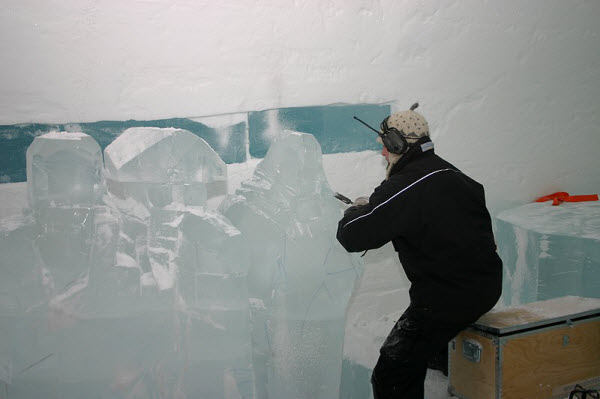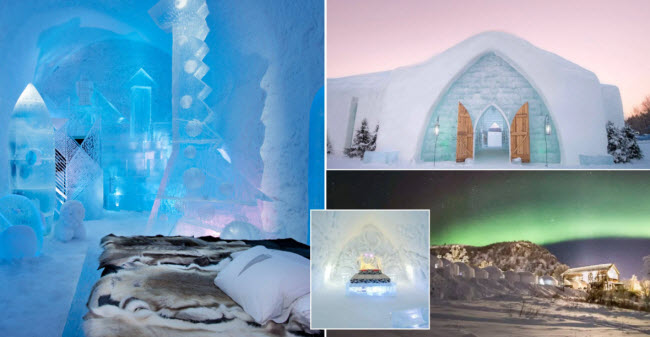Across the globe, hotels vary greatly in their design and architecture, often influenced by their surrounding environment to maximize tourist appeal. Among these unique hotels is the Icehotel in Jukkasjärvi, Sweden, located above the Arctic Circle. This extraordinary establishment is built entirely of ice and snow, offering guests an unparalleled experience. Remarkably, the Icehotel is not a year-round fixture but exists only during specific seasons, vanishing each spring as temperatures rise and then being rebuilt anew with the onset of winter.



The Icehotel, the world’s first and largest ice hotel, covers an area of 6,000 square meters and is considered one of Sweden’s seven wonders. It first opened its doors in 1990, situated 17 kilometers from Kiruna, a small village near Jukkasjärvi, which is 200 kilometers above the Arctic Circle. The concept dates back to 1989 when Japanese ice artists visited the region and held an ice art exhibition. This was followed by a 1990 exhibition by French artist Jano Dreijer, featuring an ice cabin. Due to a lack of available accommodations in the city at the time, some visitors were permitted to spend the night in the exhibition’s cabin, sleeping in sleeping bags on reindeer skins. Their enthusiasm led to the Icehotel becoming an annual tradition, initiated by Swedish entrepreneur Yngve Bergkvist, who envisioned creating a hotel made entirely of ice to attract winter tourists.



The Icehotel is crafted entirely from ice and snow sourced from the Torne River. Tonnes of ice are collected and stored in a nearby production hall, where ice blocks are formed to support the building’s structure, which resembles a single-story Eskimo igloo with an arched entrance. The double doors are covered with reindeer skins and illuminated with a cool blue light. Inside, guests find a grand hall supported by circular ice columns, adorned with an ice chandelier illuminated by fiber optics. The thick ice walls, ceiling, and floor contribute to the hotel’s unique atmosphere. The hotel features a reception area, numerous guest rooms, and suites, each designed uniquely, starting at 1,500 SEK per room. The rooms are artistically designed and furnished with insulated mattresses and reindeer fur. The hotel also includes a restaurant and bar, with tables, chairs, and glasses all crafted from ice.



The Icehotel enjoys unprecedented global fame, attracting approximately 1.5 million visitors from around the world since its inception in the early 1990s. Visitors often come to explore the hotel rather than stay overnight, given the harsh living conditions. For those who do book a room, special clothing and equipment are provided to cope with the extreme cold, as there are no heating systems inside to maintain the temperature close to -5°C. There are no plumbing facilities such as sinks or showers within the hotel; these are available in a warm building nearby. The hotel offers guests the chance to view the Northern Lights during the winter months.



Uniquely, the Icehotel changes its architecture annually. Each year, over 200 artists submit design ideas, reviewed by a panel that selects around 50 artists to bring the designs to life. Construction begins in November when temperatures drop. Snow is placed in steel molds to shape the building, and after two days, the molds are removed, and the blocks are transported to the hotel site. Artists then create their designs and decorations, with the hotel opening in stages starting early December. By January, the entire hotel is completed and remains intact until April, when it melts back into the Torne River.



The Icehotel operates under the local Jukkasjärvi parish and is part of the Swedish Church. It hosts religious ceremonies such as Christmas Eve services and also participates in social events like weddings and christenings. The hotel’s bar serves alcoholic beverages in intricately carved ice glasses, which are replaced every six months to ensure quality and safety.
